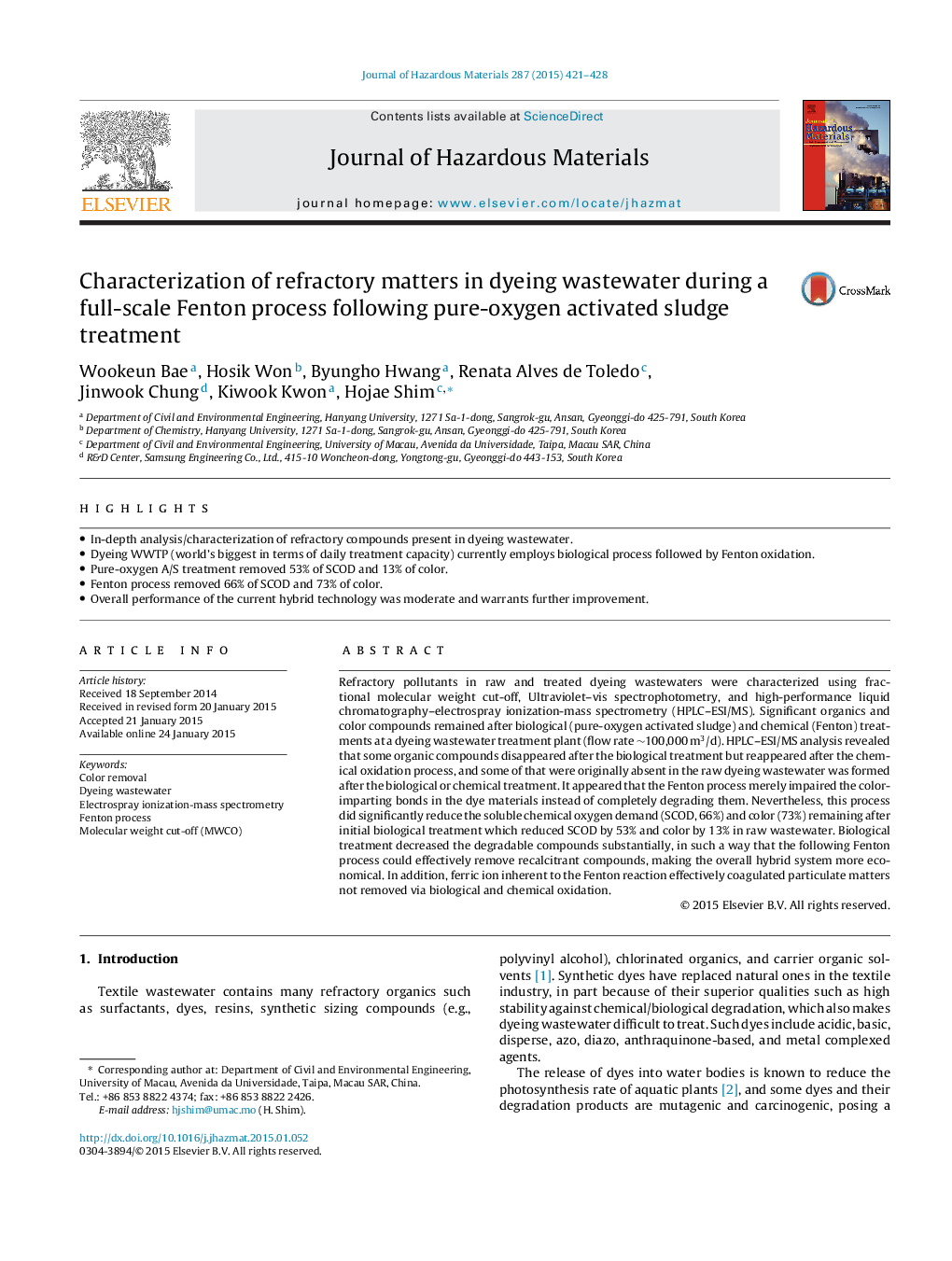| Article ID | Journal | Published Year | Pages | File Type |
|---|---|---|---|---|
| 576386 | Journal of Hazardous Materials | 2015 | 8 Pages |
Abstract
Refractory pollutants in raw and treated dyeing wastewaters were characterized using fractional molecular weight cut-off, Ultraviolet-vis spectrophotometry, and high-performance liquid chromatography-electrospray ionization-mass spectrometry (HPLC-ESI/MS). Significant organics and color compounds remained after biological (pure-oxygen activated sludge) and chemical (Fenton) treatments at a dyeing wastewater treatment plant (flow rate â¼100,000Â m3/d). HPLC-ESI/MS analysis revealed that some organic compounds disappeared after the biological treatment but reappeared after the chemical oxidation process, and some of that were originally absent in the raw dyeing wastewater was formed after the biological or chemical treatment. It appeared that the Fenton process merely impaired the color-imparting bonds in the dye materials instead of completely degrading them. Nevertheless, this process did significantly reduce the soluble chemical oxygen demand (SCOD, 66%) and color (73%) remaining after initial biological treatment which reduced SCOD by 53% and color by 13% in raw wastewater. Biological treatment decreased the degradable compounds substantially, in such a way that the following Fenton process could effectively remove recalcitrant compounds, making the overall hybrid system more economical. In addition, ferric ion inherent to the Fenton reaction effectively coagulated particulate matters not removed via biological and chemical oxidation.
Related Topics
Physical Sciences and Engineering
Chemical Engineering
Chemical Health and Safety
Authors
Wookeun Bae, Hosik Won, Byungho Hwang, Renata Alves de Toledo, Jinwook Chung, Kiwook Kwon, Hojae Shim,
